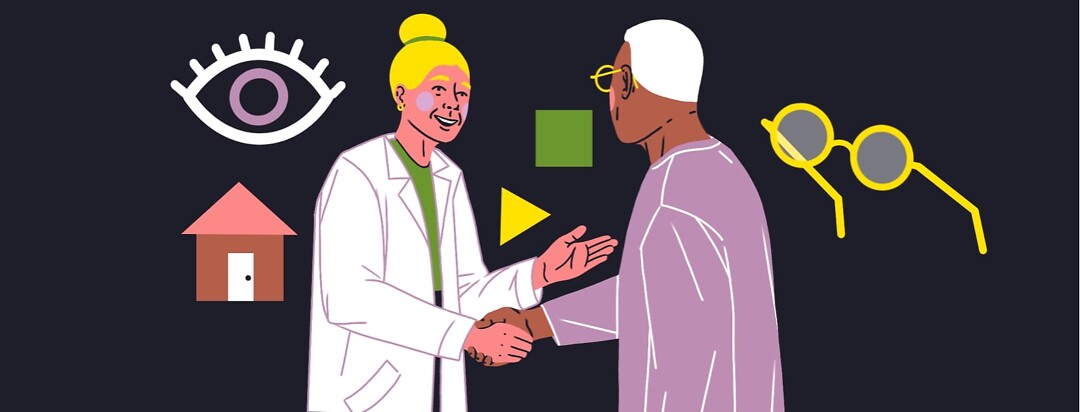My First Visit to the Vision Rehabilitation Specialist
Come along with me for my first visit to a low-vision rehab specialist.
Getting to rehab
Oddly enough, I’m driving myself to the appointment. It begs the question; “If you see well enough to safely drive, why are you going to a low-vision specialist”? Good question! You see, the thing is, one of my eyes is in a rapid decline and I am trying to be proactive and come up with some kind of plan.
Planning for my future
Plan A for my declining vision is no longer sufficient. A plan B is in order.
You see, I’ve had AMD for 9 years; wet in one eye, dry in the other. My wet eye has had over 80 anti-VEGF injections and is hanging in there at 20/35 on a good day.
My dry eye is in a nose dive, for 8 of the last 9 years it stayed about 20/30 but just in the last year has developed into geographic atrophy (GA) and is now 20/400 rendering this eye as legally blind. (20/200 being the threshold for legal blindness).
I now have monocular vision or vision in only one eye.
Plan B: Vision rehabilitation
Through research I found Community Services for Vision Rehabilitation (CSVR). The doctor I was fortunate to see is Dr Cheri Glaus,OD. She is an optometrist who specializes in low vision people like me. This has been her sole specialty for over 20 years.
Biting the bullet, I made an appointment to go see these good folks in hopes they could help and advise me. Having had a phone interview, I was deemed a possible candidate for their assistance. I would like to walk you through my first visit and what I discovered.
The initial visit
Doctor/patient interview
Items covered in the initial discussion were:
- What gives you trouble? My answers were recognizing faces unless I am pretty close to the person. Reading program descriptions on TV, unless I get out of my chair and get closer. Reading street signs and reading aisle description signs in the grocery store, etc.
- What are you hoping to gain from this visit? My answer was that I wondered what tools and strategies were available if my vision continues to tank.
The eye chart and other tests
- Eye tests: We commenced to darken the room and I was tested in both eyes. (Result was 20/35 wet eye, 20/400 GA eye).
- Glasses check: Then the good doc then took my glasses and checked them on some kind of device. They were deemed okay.
- Color contrast: She then gave me some hand sized flip charts to check my contrast sensitivity. This had different shapes, like circle, square, triangle, house shape, etc. Each next flip chart became lighter and lighter and harder to identify the random shapes. I actually did well on this.
- Color identification: As many of us know from personal experience, our colors get washed out and paler. Dr Glaus took me outside and had me put on some cranberry colored lensed Cocoon sunglasses. This part was amazing! The reddish tint really enhanced the colors of the trees and plants I viewed. (Future purchase for me)
In summation
This eye exam was unlike any of my previous visits and was intriguing and a learning experience for me. So I guess you could say, I am building my “eye team” comprising of my RS, my OD and now a low vision specialist.
My current situation does not require a CCTV, prism glasses, binocular glasses, or telescopic glasses. That’s a good thing! We then discussed when and how often I should see her, it’s as needed!
Fewer worries!
I now know there are a lot of tools and assistance for we VIPs (visually impaired people) when and if we need it. I came away less worried about my plight and I told her this. She had an interesting observation about worry: "Worry increases your cortisone levels thereby increasing inflammation!"
Finally, I don’t make light of our worry, “Worry never robs tomorrow of its sorrow, it only saps today of its joy” - unknown.
Wishing you all well on our shared journey.
Editor's Note: As of August 2023, 2 drugs known as complement inhibitors — Syfovre® and Izervay™ — have been approved by the US Food and Drug Administration (FDA) to treat geographic atrophy (GA).

Join the conversation